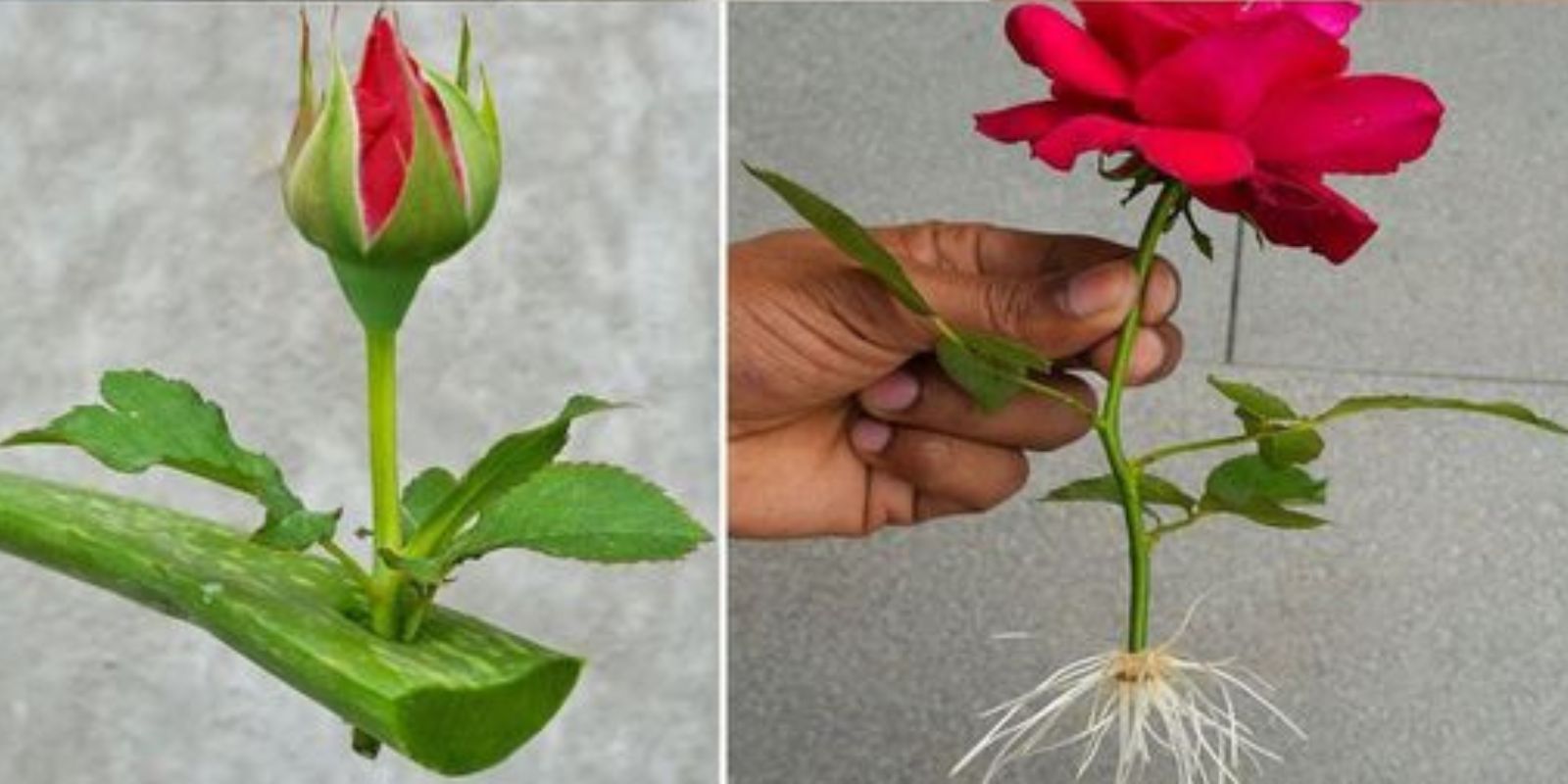Growing rose cuttings in sand can be an effective method to encourage root development. The sandy soil provides good drainage, preventing excess water around the cuttings and reducing the risk of rot. Here’s a step-by-step guide to help you grow rose cuttings faster in sand:
Materials Needed:
- Rose Cuttings:
- Select healthy stems from a mature rose bush. Cut 6 to 8 inches long, just below a leaf node. Remove any flowers or buds.
- Sand:
- Choose a coarse or builder’s sand for better drainage.
- Pots or Containers:
- Use small pots or containers with drainage holes.
- Rooting Hormone (Optional):
- Rooting hormone can enhance the development of roots.
- Plastic Bags or Domes:
- To create a humid environment for the cuttings.
Steps:
1. Prepare the Cuttings:
- Take cuttings from healthy, disease-free rose plants during the dormant season.
- Cut each stem at a 45-degree angle just below a leaf node, and remove any flowers or buds.
2. Prepare the Pots with Sand:
- Fill small pots or containers with the sandy soil.
- Moisten the sand so that it is damp but not waterlogged.
3. Dip in Rooting Hormone (Optional):
- If using rooting hormone, dip the cut end of each rose cutting into the hormone.
- Shake off excess powder to avoid over-application.
4. Plant the Cuttings:
- Insert the dipped end of each cutting about 2 to 3 inches deep into the damp sand.
- Space the cuttings a few inches apart to allow for airflow.
5. Water Gently:
- Water the cuttings gently to settle the sand around them.
- Avoid overwatering, as excessive moisture can lead to rot.
6. Create a Humid Environment:
- Cover the pots with plastic bags or domes to create a humid environment.
- Place the pots in a warm and bright location, but avoid direct sunlight.
7. Monitor and Maintain:
- Check the cuttings regularly for moisture levels and signs of roots.
- Mist the cuttings with water if the sand becomes too dry.
8. Transplanting:
- After several weeks to a few months, when the cuttings have developed sufficient roots, they can be transplanted into larger containers or directly into the garden.
Tips:
- Choose the Right Sand: Coarse sand or builder’s sand with good drainage properties is ideal.
- Warm Environment: Provide a warm environment for the cuttings to encourage root growth.
- Patience: Rooting can take time, and success rates may vary. Be patient and monitor the progress regularly.
Remember that not all rose cuttings will root successfully, but using a well-draining medium like sand can improve your chances. Additionally, be sure to choose a rose variety that is suitable for propagation from cuttings.

